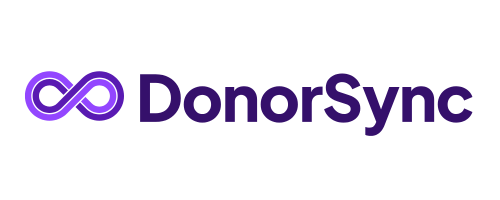Over 5 billion people access the internet each day, generating billions of transactions that current software has to handle effectively (Statista 2024). This magnitude demands an incredibly efficient web application architecture. This ensures speed and security as well as a seamless user experience. Behind every social network, e-commerce store, or business system is a complex structure connecting databases, server services, and user interfaces into one digital ecosystem.
Knowing what the architecture of a web application is is essential for architects, developers, and business executives alike. It influences performance, cost, and even innovation. This guide will explore the essential layers, contemporary patterns, technology, and the latest trends that define modern web application architecture for 2025 and beyond.
What is Web Application Architecture?
The fundamental concept behind web application architecture defines how different components of a web application interact, handle business logic, handle information, and present information to users.
Imagine an architecture diagram for a web app as a diagram. Now imagine it showing the routes data takes from the browser of the user to databases and backend servers. These patterns dictate the flow of requests and how errors are dealt with and how the app remains reliable and fast.
Key Components of Web Application Architecture
Contemporary advanced web application architecture typically includes a variety of core components that work seamlessly. Let’s explore the fundamental components.
1. Domain Name System (DNS)
DNS transforms URLs that are human-readable to the IP addresses computers can understand. When a person types in the name of a website, DNS routes their request to the right web server. This creates the first step of a web application architecture diagram.
2. Load Balancer
A load balancer spreads out incoming traffic over multiple servers, which ensures the reliability of each device by preventing it from being overwhelmed. For enterprise web application architecture, load balancers can improve the performance and uptime during the peak of traffic.
3. Web Application Servers
The servers process the client’s requests, execute back-end processing, take inputs from users, and render their responses. In the 3-tier architecture of web-based application models, this is the layer that manages business rules and integrates.
4. Databases
Databases store and retrieve permanent information, including user profiles, transactions, and analytics. The choice of the best database affects speed and scalability, particularly when it comes to modern web application architecture. These apps could be serving thousands of customers at a time.
5. Caching Service
Caches store data that is frequently used in memory to facilitate faster retrieval. They decrease the load on databases. Besides, they enhance the user experience by speeding up the loading of pages as well as API response.
6. Job Queue (Optional)
Job queues manage background tasks in asynchronous fashion. For enterprise web apps, they handle video processing, emails, or large computations without affecting user-facing functions.
7. Full-Text Search Service (Optional)
Search engines such as Elasticsearch enable advanced searching across huge databases. This is essential in enterprise web application architecture in areas such as e-commerce and media platforms that allow users to search through huge catalogs.
8. Services
External services such as payment gateways or messaging services and analytics tools are typically included in the architecture of a web application. This enhances its capabilities without having to reinvent the wheel.
9. Data Warehouse
A data warehouse is a repository for massive amounts of data from different sources to provide analytics and business intelligence. This feature is essential to enterprise web application architecture, which allows leaders to take informed decisions based on data.
10. CDN (Content Delivery Network)
A CDN delivers static content, including images, videos, and scripts, across the globe, ensuring quicker delivery no matter the location of the user. CDNs improve performance and decrease the amount of latency that occurs when used in web-based application architecture.
Different Models of Web Application Architecture
The way you design your databases and servers determines the durability and scalability of your software. Let’s look at a few of the traditional models that are found within web application architecture diagrams. This will demonstrate how components function in the background.
1. One Web Server, One Database
The model uses one single web server linked to an individual database. It is easy to set up and maintain, making it suitable for small-scale projects or prototypes. But it also creates single points of failure, which can limit capacity and resilience in high usage.
2. Multiple Web Servers, One Database
In this case, several web servers handle requests coming in, sharing the burden and increasing the reliability. However, despite the improved capacity of the server, one database is still an obstacle. In the event of heavy traffic, the database could fail, rendering this system not ideal for demands at the enterprise level.
3. Multiple Web Servers, Multiple Databases
To ensure high performance, companies install multiple web servers along with multiple databases. Databases can be divided into regions as well as services or data types. The web-based architecture of applications improves the scalability and fault tolerance. However, it introduces complexities in the synchronization of data and data consistency.
Types of Web Application Architecture
The best architectural style will depend on your business goals as well as the size and development resources. Here are the main models that are shaping modern web application architecture. Each web app type has its own advantages and challenges for both enterprises and developers.
1. Monolithic Architecture
A monolithic structure keeps the entire system, including the frontend, backend, and business logic, inside one codebase. It’s easier to design and implement initially.
However, as applications expand and grow, scaling and maintaining a monolith is becoming increasingly challenging. This can limit the flexibility of deployment and create bottlenecks.
2. Microservices Architecture
Microservices separate applications into small, independent services that can be deployed independently. Each one is devoted to a distinct purpose, such as the authentication process or processing of payments. They are popular within enterprise web application architecture. This approach offers increased scaling, quicker development cycles, and more resilience. But it also requires careful orchestration as well as complex inter-service communications.
3. Serverless Architecture
Serverless computing does away with the requirement to use traditional servers. Instead, developers use distinct functions that operate upon events, such as HTTP requests. The providers handle scaling infrastructure, providing the most cost-effective and flexible web application architecture. This is essential for applications that have unpredictable workloads or rapid scaling requirements. Here are the most efficient serverless designs currently in use:
AWS Lambda
AWS Lambda runs backend code in response to events without having to manage servers. It is ideal for tasks such as processing data for transformation of files or automated workflows for backends within a modern web application architecture.
API Gateway
API Gateway manages incoming HTTP requests and forwards them to different backend services using a serverless design. It provides security, throttling, as well as simple API versioning to support high-performance applications.
AWS Step Functions
AWS Step Functions coordinate multiple AWS services into visual workflows. They allow for sophisticated business logic and the handling of errors in advanced web application architecture without installing separate servers and monolithic code bases.
4. Container
Containers, like Docker packages, dependencies, and other applications, transform into portable units. Containers facilitate deployment, improve efficiency of resources, and help to create the same environment across production and development.
Web Application Architecture Layers
The typical 3-tier architecture of web-based applications splits the system into logical layers. This is done to increase the performance, maintainability, and ability to scale. Here are all the layers one by one:
Frontend Layer: Presentation Layer (Client-side Component)
This layer provides you with the interface. The technologies include
The key technologies that shape this layer:
- HTML serves as the primary document structure for each web page.
- CSS ensures uniform layouts, styling, and visual appeal.
- JavaScript provides the dynamic behavior of users and user interactions.
- React provides a contemporary method of building component-based interactive user interfaces.
- Vue.js is light, versatile, flexible, and easy to add into your existing applications.
- Angular.js is a strong framework that can be used to build high-end as well as advanced web application architecture projects.
Backend Layer: Application Layer (Server-side Component)
This layer is responsible for integrations, business logic, and secure transaction of data.
Backend Technologies for Web Application Architecture
- Ruby is great for rapid prototyping.
- Python is a popular choice for data-intensive applications.
- Node.js is ideal for environments with high concurrency.
Application Layer: API (Application Programming Interface)
APIs link backend and frontend components. This allows communication between devices and services.
Types of APIs
- RESTful APIs are stateless and widely utilized.
- GraphQL ensures flexible queries that retrieve only the information clients require.
- GRPC ensures high-performance inter-service communication within microservices.
Data Layer: Database
The data layer can store and retrieve application data. SQL databases such as PostgreSQL are solid for structured data, as NoSQL databases are able to handle a range of flexible, large-volume storage requirements.
Our web application development team in Baton Rouge always makes sure that your app has every layer covered.
Why Web Application Architecture Matters for Businesses
A well-designed web application architecture goes far beyond just code. It directly impacts the business outcome. For businesses operating at a large and enormous scale, particularly those that build web-based applications for enterprise architecture, it is a crucial asset that decides how speedy and secure the services they offer are.
The reason why this is important:
- Performance: A well-designed web-based application architecture guarantees fast loading times, increasing the user’s experience and retention.
- Security: Strong security Architecture protects the data of users and assets of enterprises against unauthorized access.
- Scalability: Flexible structure lets you expand smoothly with no problem, even with a higher workload.
- Cost-efficiency: A well-planned plan can avoid the overprovisioning of infrastructure and decrease cloud expenses.
- Innovation Modernity: A modular system allows rapid adaptation to the changing business model.
Best Practices in Web Application Architecture
Future-proof apps are built on solid foundations. Here’s how to build resilient and scalable systems:
1. Scalable Web Servers
Develop a web application architecture to support horizontal scaling. The addition of servers to the load reduces interruptions in performance and ensures the smooth operation of enterprise web applications as the demand changes and increases.
2. Cloud Integration and Elastic Infrastructure
Cloud-based platforms like AWS or Azure provide elastic resources. This lets modern web application architecture grow during peak times and shrink to reduce costs when demand decreases.
3. Immutable Infrastructure
Use server images that are unchangeable snapshots. This prevents concealed modifications to configuration that make updates a lot more predictable, thereby reducing the risk of bugs, which is a critical aspect of enterprise web application architecture.
4. Microservices and Serverless Approach
Modern web application architecture often embraces microservices or serverless. They allow for the independent scaling of applications, quicker deployments, and simpler maintenance, making the system more adaptable and robust under diverse business demands.
5. Multi-Tenant Architecture
In SaaS multi-tenancy, many clients share the infrastructure while separating data. This effective web-based application architecture maximizes the use of resources and lowers the operational expenses for enterprises.
6. Secure Web Applications by following industry guidelines
Security is not a matter of compromise. Implementing standards such as HIPAA in healthcare or PCI to protect payment information and SOC2 for service control helps to protect the trust of users and is in line with the development of enterprise-grade web applications.
7. Automating the deployment of code with DevOps CD/CI
CI/CD pipelines facilitate testing development, deployments, and building. This ensures consistency in the release of enterprise web applications. This helps reduce human error while making it easier to deliver faster across distributed teams.
8. Building a Web Architecture with Infrastructure as Code Tools
Tools such as Terraform as well as AWS CloudFormation allow teams to define infrastructure using code. It improves consistency, eases modifications, and ensures security for deployments for enterprises in complicated web application architecture environments.
Current Trends in Web Application Architecture (2025)
The environment of modern web application architecture is rapidly changing. Innovative technologies and better systems are changing the way enterprise web apps remain quick, durable, and efficient.
AI-Driven Architectures
AI examines patterns of use and predicts spikes in traffic and then dynamically allocates resources. This creates advanced web application architecture that is smarter, reducing downtime and increasing user comfort and operational efficiency.
Caching System Advances
Newer caching methods are able to store data that is frequently accessed nearer to users. This greatly reduces the load on databases as well as latency. This is vital for real-time enterprise web applications as well as global user experience.
Cloud Storage (e.g., Amazon S3)
Cloud-based solutions such as Amazon S3 provide cost-effective, infinitely scalable storage for objects. This is a great solution for media-intensive web-based application architecture by handling large files and ensuring high performance and reliability.
CDN Tools and Benefits
Modern CDNs like Cloudflare and Akamai improve the speed of delivery of content across the globe. They are essential for optimizing web application architecture by reducing time to load and increasing performance for worldwide users.
Load Balancer Optimization
AI-enhanced load balancers efficiently disperse network traffic over servers. This provides high availability, optimal utilization of resources, and increased reliability within modern web application architecture setups.
Multiple Servers for Enhanced Scalability
The deployment of apps across multiple servers or locations reduces latency and improves disaster recovery. It’s a fundamental practice in distributed teams web application architecture to satisfy the global demands of users.
Message Queues for Efficient Task Management
Message brokers such as RabbitMQ or Kafka manage asynchronous tasks, disconnect services, and keep efficiency under the rigors of heavy load. They are essential for the robust architecture of a web application in complex systems.
Web Application Architecture Diagram
A web application architecture diagram visually shows how databases, service servers, databases, and user interfaces work together. Architects utilize these diagrams to create designs, plan, and present systems in a clear manner.
When creating a 3-tier architecture of a web-based application or a more complex microservices framework, diagrams make sure that everyone knows the system.
Ready to Build the Future?
When you’re transforming outdated systems or preparing the development of new digital products, understanding web application architecture is crucial to achieving successful implementation. Let’s talk about the ways HALO Digital can bring your vision to life. We provide flexible, secure, modern-day architecture that’s tailored to your specific business requirements.
FAQs
What is Web Application Architecture?
The web application architecture is the basic outline of the way that web interfaces on the front end, as well as backend services, databases, and external integrations, function. It defines the channels that allow data to flow through, scale and security, and user interaction in the modern digital system.
How Does Web Application Architecture Affect Performance?
A properly designed web application architecture enhances performance by reducing bottlenecks, which allows faster page load times, handling massive user numbers, and ensuring stable performance under extreme pressure. It is essential to provide seamless user experiences as well as enterprise-level reliability for online platforms.
What Are the Key Differences Between Web Application Architecture and Software Design?
As web application architecture sets the top-level structure and connects components of the system, software design is focused on the intricate coding logic, UX/UI, and the specific design patterns for implementation. Both are essential to build efficient, reliable applications.
Why Is the API Layer Crucial for Web Applications?
The API layer within modern web application architecture enables front-end and back-end systems to communicate with ease. It makes it easier to integrate with third-party services, provides secure data exchange, and allows enterprises to expand and grow independently.
Conclusion: Web Application Architecture
The architecture of a web application determines the digital world that we live in. From small-scale businesses to multinational corporations, your success relies on scalable, safe, and future-proof systems. No matter if you’re taking on modern web application architecture with microservices or creating your own enterprise web application architecture, careful planning will ensure that technology propels you forward.
Arsalan Chauhdary is the CEO of Halo Digital and a senior full-stack developer with over 8 years of experience building scalable, secure, and high-performing digital solutions. As a thought-provoking leader and hands-on architect, he blends strategy with code to transform ideas into impactful web and mobile platforms. Passionate about clean architecture, Laravel, JavaScript, and solving real-world problems, Arsalan continues to guide teams and clients through the evolving landscape of modern development.



























